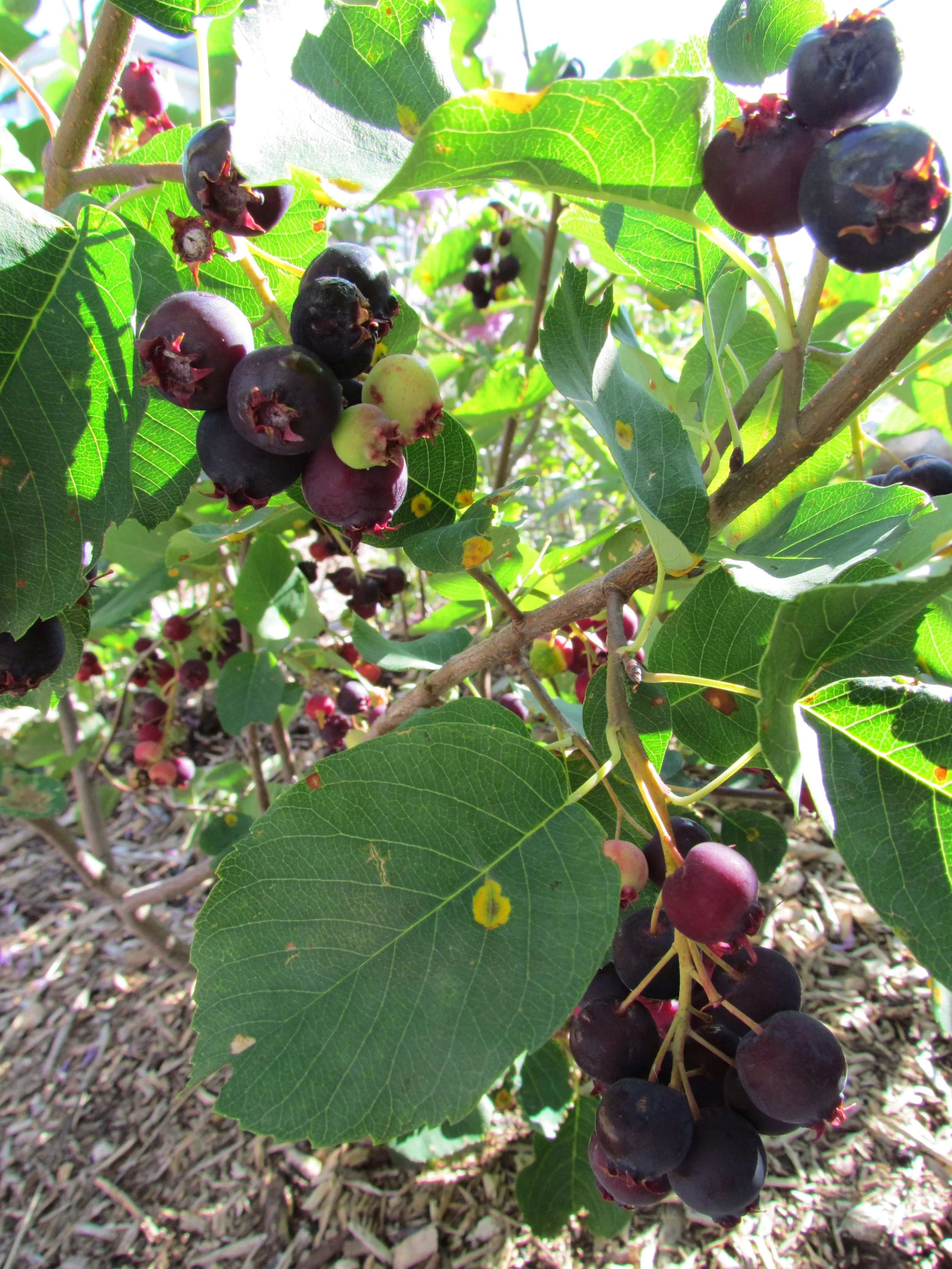Saskatoon
Ethnobotany
This 1–4 m tall shrub forms colonies that are very common in coulees and open woodlands. In May it produces racemes of white flowers 8–12 mm across that by early summer have matured into a sweet and juicy berry-like fruit. Blue-purple with a bloom, or powdery coating, the fruit may be up to 10 mm in diameter.
According to Johnston, the saskatoon “was probably the most important vegetable food of the Blackfoot. The berries were used in great quantities in soups, stew, and meats, and were dried for winter use.” (38) Linda Kershaw claims that cakes of dried berries could weigh as much as 7 kg. (69) A favourite dessert of the Blackfoot people, reported by both Johnston (38) and Royer (56), was a mixture of berries with bison fat and blood.
Hungry Wolf reports its Blackfoot name is Real Berry, and that it had special significance because it ripened at “the time that many tribes gather traditionally for their annual encampments and ceremonials.” (12) So important was this food that the people moved their camps to areas of high production. Manyberries, in southeastern Alberta, is an example of one such appropriately named location.
Because the wood is hard, heavy and quite straight, the saskatoon was also valued as material for arrows, pipe stems, basket rims and tipi closure pins. (Kershaw 69) Johnston describes the elaborate process used by the Blackfoot to turn saskatoon shoots into arrows; it required the use of sandstone and bison bone or horn to shape, polish and groove the wood. (38)
Botany
Growth habit and range: The saskatoon is a tall shrub to small tree growing to a height of 1–5 meters. This woody plant is common and found in open woods and coulee ravines throughout the province, often forming a thicket.
Description: The bark is dark brown and smooth on young shoots and greyish on older parts of the plant. The dark green leaves are alternate on the stems, measure 1–5 cm in length, and are simple and rounded in shape, with short serrations of the margin at the tip. In fall, the leaves turn orange or red.
The fragrant white flowers are borne in a raceme which appears in May or June. Each blossom measures 8–12 mm in diameter and has 5 slender, curving petals and up to 20 yellow stamens. The sweet, red to purple berry-like pome fruits ripen in July. Each fruit measures up to 10 mm in diameter and contains many seeds. These fruits are high in iron and copper.
References
Johnston, Alex. 1987. Plants and the Blackfoot. Occasional Paper No. 15., Lethbridge Historical Society, AB.
Kershaw, Linda. 2000. Edible and Medicinal Plants of the Rockies. Lone Pine Publishing, AB.


